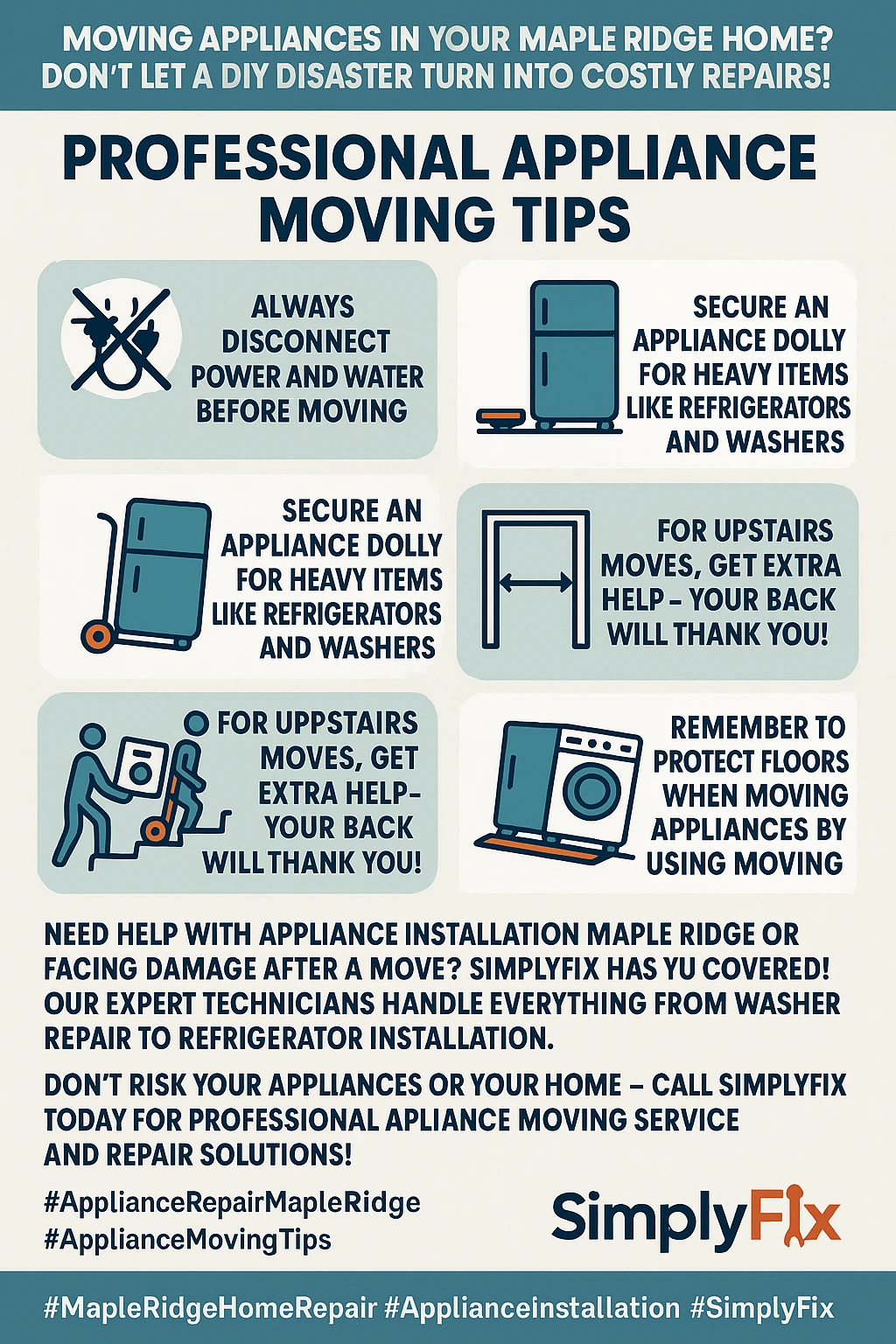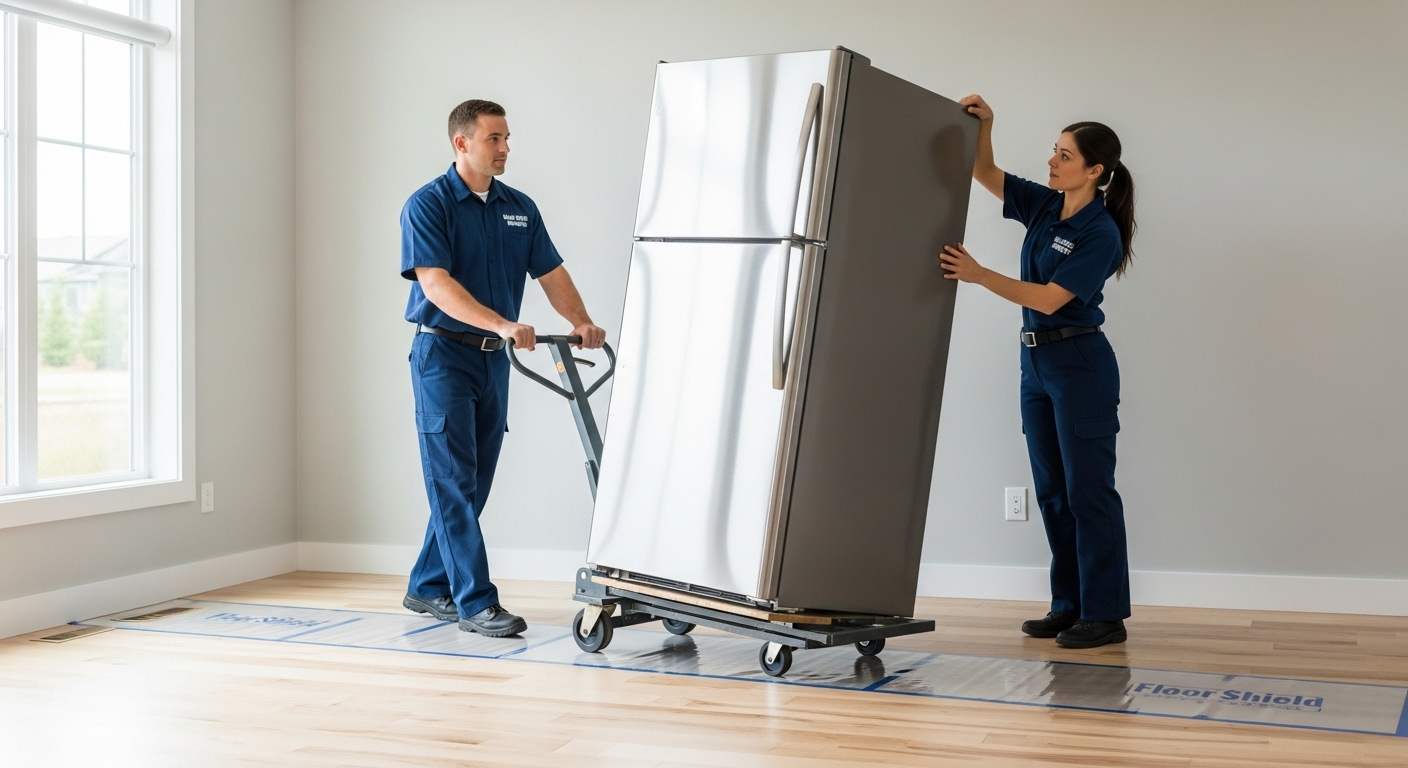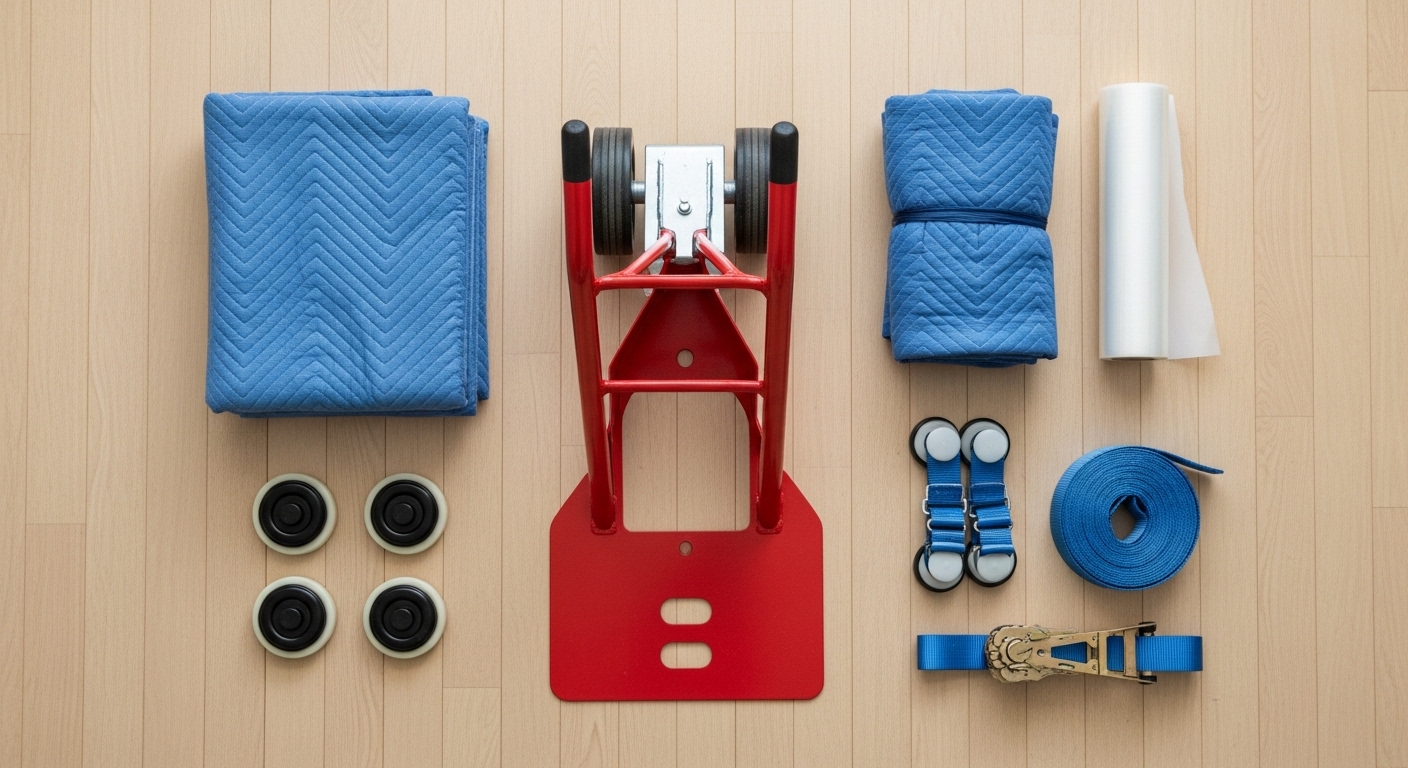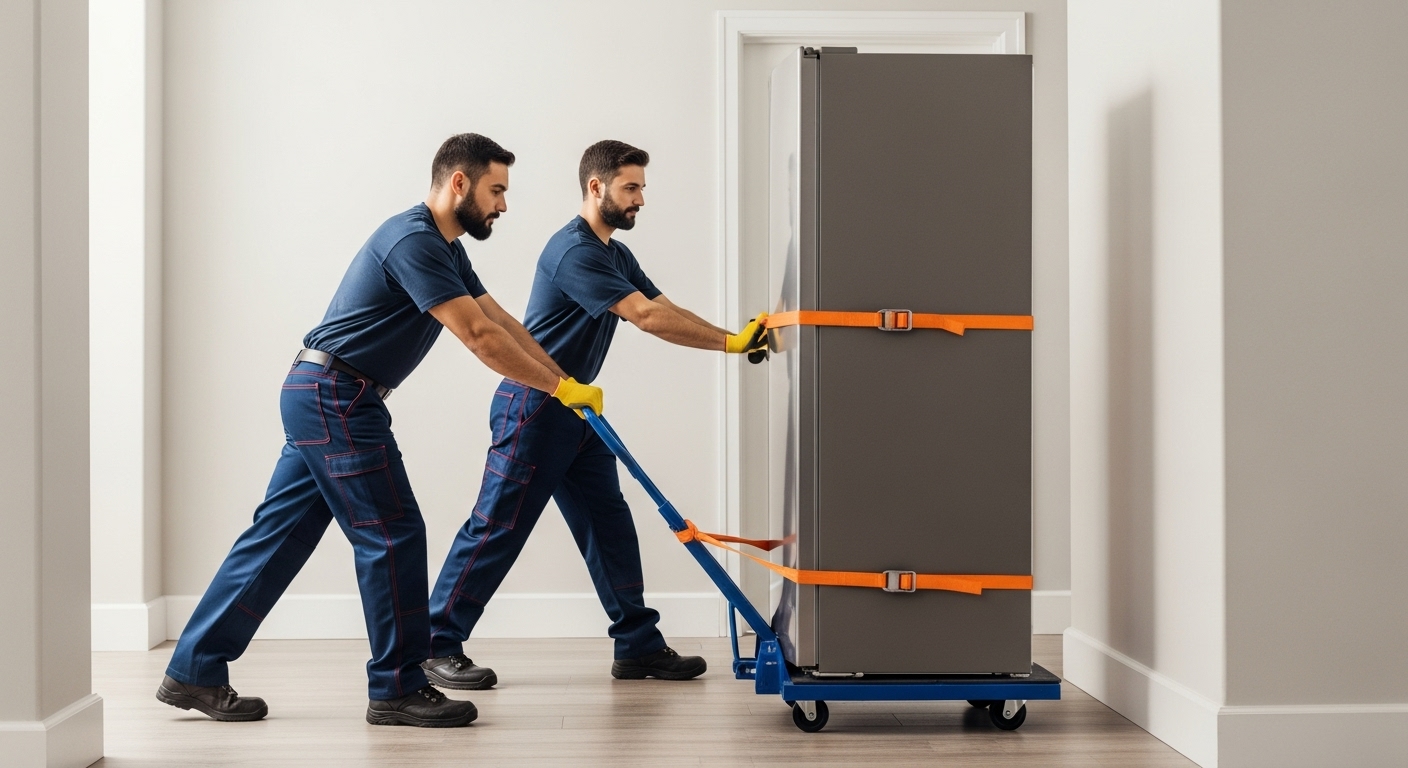How to Safely Move Appliances Without Damaging Your Maple Ridge Home: Professional Tips to Avoid Costly Repairs
Planning to move your heavy appliances around your Maple Ridge home but worried about damaging your floors or the appliances themselves? We’ve got you covered with professional tips and local insights that will save you hundreds in potential repair costs while keeping your home and appliances in pristine condition.Moving appliances in your home might seem straightforward, but one wrong move can lead to scratched hardwood floors, dented walls, or even damaged appliances that cost hundreds to repair. Whether you’re rearranging your kitchen during a renovation, moving your washer and dryer to a different floor, or simply need to access the space behind your refrigerator, knowing the right techniques can make all the difference. This is especially true in Maple Ridge, where many homes feature beautiful hardwood floors and unique architectural layouts that require special consideration. [IMAGE PLACEHOLDER FOR IMAGE1] The good news is that with proper planning, the right equipment, and knowledge of professional techniques, you can safely move even the heaviest appliances without causing damage to your home or your wallet. From understanding which floor protection works best for different surfaces to knowing when it’s worth calling in the professionals, we’ll walk you through everything you need to know to tackle this challenge like a pro.
Key Outtakes:
- Proper preparation and equipment can prevent 90% of appliance moving damage, saving you hundreds in repair costs
- Floor protection is essential and should match your specific flooring type – different materials require different approaches
- Maple Ridge’s coastal climate requires 24-hour settling time for refrigerators after moving to prevent compressor damage
- Professional disconnection of gas and water lines prevents costly repairs and ensures safety compliance with BC regulations
- Using proper dollies and lifting techniques reduces injury risk by 75% while protecting your appliances from internal damage

Essential Pre-Move Planning for Maple Ridge Homes
 Before you even think about moving that heavy refrigerator or washing machine, proper planning is absolutely crucial for protecting both your home and your appliances. The excitement of rearranging your space can quickly turn into regret if you skip these essential preparation steps. Smart planning not only prevents damage but also makes the entire process smoother and safer for everyone involved. The first step in any appliance moving project is conducting a thorough measurement assessment of your route. You’ll need to measure not just the appliance itself, but also every doorway, hallway, and stairwell it needs to pass through during the move. This might seem obvious, but you’d be surprised how many people discover their brand-new refrigerator won’t fit through their kitchen doorway only after they’ve already started the moving process. Take measurements of the appliance’s height, width, and depth, then compare these to your available clearance space, remembering to account for the additional bulk of moving equipment like dollies. Maple Ridge homes present unique challenges depending on their era of construction. If you’re living in one of the area’s charming older homes built before 1990, you might encounter narrower doorways and hallways that were designed for smaller appliances. These vintage homes often require creative solutions like removing door frames or hinges temporarily. On the other hand, newer Maple Ridge developments typically feature more spacious layouts that accommodate modern appliance sizes, but they may have other obstacles like multiple levels or tight corner turns that need special attention. The coastal climate in Maple Ridge also affects your moving timeline in ways that many homeowners don’t consider. Temperature fluctuations and humidity levels can impact how long appliances need to settle after being moved, particularly refrigerators and freezers. Plan for at least 24 hours of settling time before plugging in refrigeration units, and consider seasonal factors like rain and moisture that might affect your moving day logistics. Spring and fall moving seasons in Maple Ridge often come with unpredictable weather, so having backup plans for protection against moisture becomes essential. Documentation is another crucial aspect of pre-move planning that often gets overlooked. Take detailed photos of your home’s current condition, focusing on floors, walls, and areas where the appliance will travel. This documentation serves multiple purposes – it helps you remember the exact positioning of your appliances for reinstallation, provides evidence for insurance claims if damage occurs, and gives you a baseline for assessing whether any damage happened during the move. Additionally, check your homeowner’s insurance policy to understand what types of damage might be covered during DIY appliance moves versus professional moving services.
Before you even think about moving that heavy refrigerator or washing machine, proper planning is absolutely crucial for protecting both your home and your appliances. The excitement of rearranging your space can quickly turn into regret if you skip these essential preparation steps. Smart planning not only prevents damage but also makes the entire process smoother and safer for everyone involved. The first step in any appliance moving project is conducting a thorough measurement assessment of your route. You’ll need to measure not just the appliance itself, but also every doorway, hallway, and stairwell it needs to pass through during the move. This might seem obvious, but you’d be surprised how many people discover their brand-new refrigerator won’t fit through their kitchen doorway only after they’ve already started the moving process. Take measurements of the appliance’s height, width, and depth, then compare these to your available clearance space, remembering to account for the additional bulk of moving equipment like dollies. Maple Ridge homes present unique challenges depending on their era of construction. If you’re living in one of the area’s charming older homes built before 1990, you might encounter narrower doorways and hallways that were designed for smaller appliances. These vintage homes often require creative solutions like removing door frames or hinges temporarily. On the other hand, newer Maple Ridge developments typically feature more spacious layouts that accommodate modern appliance sizes, but they may have other obstacles like multiple levels or tight corner turns that need special attention. The coastal climate in Maple Ridge also affects your moving timeline in ways that many homeowners don’t consider. Temperature fluctuations and humidity levels can impact how long appliances need to settle after being moved, particularly refrigerators and freezers. Plan for at least 24 hours of settling time before plugging in refrigeration units, and consider seasonal factors like rain and moisture that might affect your moving day logistics. Spring and fall moving seasons in Maple Ridge often come with unpredictable weather, so having backup plans for protection against moisture becomes essential. Documentation is another crucial aspect of pre-move planning that often gets overlooked. Take detailed photos of your home’s current condition, focusing on floors, walls, and areas where the appliance will travel. This documentation serves multiple purposes – it helps you remember the exact positioning of your appliances for reinstallation, provides evidence for insurance claims if damage occurs, and gives you a baseline for assessing whether any damage happened during the move. Additionally, check your homeowner’s insurance policy to understand what types of damage might be covered during DIY appliance moves versus professional moving services.
Equipment Essentials and Floor Protection Strategies
 Having the right equipment transforms an potentially disastrous appliance moving experience into a manageable project, and this is where many DIY attempts go wrong from the start. The difference between success and costly damage often comes down to using proper equipment rather than trying to muscle heavy appliances with inadequate tools. Professional movers invest thousands of dollars in specialized equipment for good reason – it works, and it prevents the kind of damage that can cost far more than the equipment rental fees. [IMAGE PLACEHOLDER FOR IMAGE2] The cornerstone of any appliance moving project is a high-quality appliance dolly, also known as a hand truck designed specifically for heavy appliances. These aren’t the same as regular moving dollies – appliance dollies feature curved backs that cradle appliances, secure strapping systems, and often include stair-climbing wheels that can handle the multi-level layouts common in many Maple Ridge homes. You can rent these from several locations in Maple Ridge, with U-Haul typically charging $10-15 per day for quality appliance dollies, making them an incredibly cost-effective investment when you consider they can prevent hundreds of dollars in potential damage. Floor protection is where many homeowners make critical mistakes that end up costing them significantly more than they saved by doing the move themselves. Different flooring types require specific protection strategies, and using the wrong approach can actually cause more damage than providing no protection at all. For hardwood floors, which are popular in many Maple Ridge homes, products like Floor Shield offer superior protection with their thicker, non-slip, self-adhering design that won’t leave residue or cause scratches. Regular cardboard or thin plastic sheeting simply isn’t adequate for protecting quality hardwood from the concentrated weight and movement of heavy appliances. Carpeted areas need different considerations entirely, with furniture sliders and padded runners providing the best protection for both the carpet fibers and the subflooring beneath. Tile and laminate floors present their own challenges, particularly around grout lines and seams where concentrated pressure from appliance feet can cause cracking or separation. The key is matching your protection strategy to your specific flooring type rather than using a one-size-fits-all approach that might not provide adequate protection where you need it most. Moving blankets and protective wrapping might seem like optional extras, but they’re absolutely essential for preventing scratches, dents, and other cosmetic damage to your appliances. Professional-grade moving blankets are thicker and more durable than regular blankets, providing superior protection during transport. They also help protect your walls and door frames from impact damage as you navigate appliances through tight spaces. When you consider that a single deep scratch on a stainless steel refrigerator can cost $200-300 to repair professionally, investing in proper protective materials becomes an obvious choice. Seasonal considerations in Maple Ridge add another layer to your equipment needs that many guides overlook. During the wet season from October through April, moisture protection becomes crucial for both your equipment and your home. Non-slip equipment ratings become more important when dealing with potentially wet surfaces, and you might need additional tarps or coverings to protect appliances during transport between buildings or through covered outdoor areas.
Having the right equipment transforms an potentially disastrous appliance moving experience into a manageable project, and this is where many DIY attempts go wrong from the start. The difference between success and costly damage often comes down to using proper equipment rather than trying to muscle heavy appliances with inadequate tools. Professional movers invest thousands of dollars in specialized equipment for good reason – it works, and it prevents the kind of damage that can cost far more than the equipment rental fees. [IMAGE PLACEHOLDER FOR IMAGE2] The cornerstone of any appliance moving project is a high-quality appliance dolly, also known as a hand truck designed specifically for heavy appliances. These aren’t the same as regular moving dollies – appliance dollies feature curved backs that cradle appliances, secure strapping systems, and often include stair-climbing wheels that can handle the multi-level layouts common in many Maple Ridge homes. You can rent these from several locations in Maple Ridge, with U-Haul typically charging $10-15 per day for quality appliance dollies, making them an incredibly cost-effective investment when you consider they can prevent hundreds of dollars in potential damage. Floor protection is where many homeowners make critical mistakes that end up costing them significantly more than they saved by doing the move themselves. Different flooring types require specific protection strategies, and using the wrong approach can actually cause more damage than providing no protection at all. For hardwood floors, which are popular in many Maple Ridge homes, products like Floor Shield offer superior protection with their thicker, non-slip, self-adhering design that won’t leave residue or cause scratches. Regular cardboard or thin plastic sheeting simply isn’t adequate for protecting quality hardwood from the concentrated weight and movement of heavy appliances. Carpeted areas need different considerations entirely, with furniture sliders and padded runners providing the best protection for both the carpet fibers and the subflooring beneath. Tile and laminate floors present their own challenges, particularly around grout lines and seams where concentrated pressure from appliance feet can cause cracking or separation. The key is matching your protection strategy to your specific flooring type rather than using a one-size-fits-all approach that might not provide adequate protection where you need it most. Moving blankets and protective wrapping might seem like optional extras, but they’re absolutely essential for preventing scratches, dents, and other cosmetic damage to your appliances. Professional-grade moving blankets are thicker and more durable than regular blankets, providing superior protection during transport. They also help protect your walls and door frames from impact damage as you navigate appliances through tight spaces. When you consider that a single deep scratch on a stainless steel refrigerator can cost $200-300 to repair professionally, investing in proper protective materials becomes an obvious choice. Seasonal considerations in Maple Ridge add another layer to your equipment needs that many guides overlook. During the wet season from October through April, moisture protection becomes crucial for both your equipment and your home. Non-slip equipment ratings become more important when dealing with potentially wet surfaces, and you might need additional tarps or coverings to protect appliances during transport between buildings or through covered outdoor areas.
Appliance-Specific Moving Techniques and Safety Protocols
 Each type of appliance presents unique challenges and requires specific techniques for safe transportation, and understanding these differences is crucial for preventing both immediate damage and long-term functionality issues. Generic moving advice simply doesn’t account for the internal components, connection requirements, and structural vulnerabilities that make each appliance type special. Let’s dive deep into the professional techniques that ensure your specific appliances make it to their new location in perfect working condition. Refrigerators are perhaps the most challenging appliances to move safely due to their size, weight, and delicate internal components. The compressor system that keeps your food cold contains oils and coolants that can be permanently damaged if the unit is tilted beyond certain angles or moved improperly. Professional movers always transport refrigerators in an upright position whenever possible, using specialized dollies and securing straps to maintain proper orientation throughout the move. If you absolutely must tilt a refrigerator to navigate tight spaces, never exceed a 45-degree angle and always return it to upright position as quickly as possible. [IMAGE PLACEHOLDER FOR IMAGE3] The 24-hour settling rule for refrigerators is particularly important in Maple Ridge’s coastal climate, where humidity and temperature fluctuations can affect internal components. After moving your refrigerator, resist the urge to plug it in immediately, even if it remained upright throughout the move. Allow it to sit undisturbed for at least 24 hours to ensure that the compressor oils have fully settled back into place. Plugging it in too soon can cause catastrophic compressor failure, which often costs more to repair than the refrigerator is worth. This simple act of patience can save you from a major appliance replacement expense. For washing machines, the biggest risk during a move is damage to the drum and suspension system. All front-loading washing machines and many modern top-loaders have a drum that is suspended by springs and shock absorbers to handle high-speed spin cycles. Moving the machine without securing the drum can cause these components to break, leading to loud noises, violent shaking, or a complete failure of the machine. To prevent this, you must install shipping bolts (also known as transit bolts) before moving the washer. These bolts lock the drum in place, preventing it from moving during transport. If you’ve misplaced the original shipping bolts that came with your machine, you can usually order a new set from the manufacturer for around $20-30, a small price to pay to avoid a $400+ drum replacement repair. Gas stoves and dryers require special attention due to the inherent safety risks associated with gas lines. In British Columbia, it is highly recommended, and often legally required, to have a licensed and certified gas fitter handle the disconnection and reconnection of any gas appliance. Improperly disconnecting a gas line can lead to dangerous leaks, while incorrect reconnection can pose a serious fire or explosion hazard. Beyond the immediate safety concerns, DIY gas line work can also void your home insurance policy in the event of an accident. Always consult with a professional service like Technical Safety BC for guidelines and to find certified fitters in the Maple Ridge area. Don’t risk your family’s safety or a costly insurance dispute to save a few dollars on professional services. Dishwashers, while not as heavy as other appliances, have delicate water lines and drainage hoses that can be easily damaged. Before moving a dishwasher, ensure it is completely empty and that the water supply has been turned off at the shut-off valve, which is typically located under the sink. Disconnect the water supply line and the drain hose carefully, placing a towel underneath to catch any residual water. It’s also a good idea to tape the hoses to the side of the dishwasher to prevent them from getting caught or kinked during the move. When reinstalling, check for any leaks at the connection points before pushing the dishwasher back into place to prevent water damage to your kitchen cabinets and flooring.
Each type of appliance presents unique challenges and requires specific techniques for safe transportation, and understanding these differences is crucial for preventing both immediate damage and long-term functionality issues. Generic moving advice simply doesn’t account for the internal components, connection requirements, and structural vulnerabilities that make each appliance type special. Let’s dive deep into the professional techniques that ensure your specific appliances make it to their new location in perfect working condition. Refrigerators are perhaps the most challenging appliances to move safely due to their size, weight, and delicate internal components. The compressor system that keeps your food cold contains oils and coolants that can be permanently damaged if the unit is tilted beyond certain angles or moved improperly. Professional movers always transport refrigerators in an upright position whenever possible, using specialized dollies and securing straps to maintain proper orientation throughout the move. If you absolutely must tilt a refrigerator to navigate tight spaces, never exceed a 45-degree angle and always return it to upright position as quickly as possible. [IMAGE PLACEHOLDER FOR IMAGE3] The 24-hour settling rule for refrigerators is particularly important in Maple Ridge’s coastal climate, where humidity and temperature fluctuations can affect internal components. After moving your refrigerator, resist the urge to plug it in immediately, even if it remained upright throughout the move. Allow it to sit undisturbed for at least 24 hours to ensure that the compressor oils have fully settled back into place. Plugging it in too soon can cause catastrophic compressor failure, which often costs more to repair than the refrigerator is worth. This simple act of patience can save you from a major appliance replacement expense. For washing machines, the biggest risk during a move is damage to the drum and suspension system. All front-loading washing machines and many modern top-loaders have a drum that is suspended by springs and shock absorbers to handle high-speed spin cycles. Moving the machine without securing the drum can cause these components to break, leading to loud noises, violent shaking, or a complete failure of the machine. To prevent this, you must install shipping bolts (also known as transit bolts) before moving the washer. These bolts lock the drum in place, preventing it from moving during transport. If you’ve misplaced the original shipping bolts that came with your machine, you can usually order a new set from the manufacturer for around $20-30, a small price to pay to avoid a $400+ drum replacement repair. Gas stoves and dryers require special attention due to the inherent safety risks associated with gas lines. In British Columbia, it is highly recommended, and often legally required, to have a licensed and certified gas fitter handle the disconnection and reconnection of any gas appliance. Improperly disconnecting a gas line can lead to dangerous leaks, while incorrect reconnection can pose a serious fire or explosion hazard. Beyond the immediate safety concerns, DIY gas line work can also void your home insurance policy in the event of an accident. Always consult with a professional service like Technical Safety BC for guidelines and to find certified fitters in the Maple Ridge area. Don’t risk your family’s safety or a costly insurance dispute to save a few dollars on professional services. Dishwashers, while not as heavy as other appliances, have delicate water lines and drainage hoses that can be easily damaged. Before moving a dishwasher, ensure it is completely empty and that the water supply has been turned off at the shut-off valve, which is typically located under the sink. Disconnect the water supply line and the drain hose carefully, placing a towel underneath to catch any residual water. It’s also a good idea to tape the hoses to the side of the dishwasher to prevent them from getting caught or kinked during the move. When reinstalling, check for any leaks at the connection points before pushing the dishwasher back into place to prevent water damage to your kitchen cabinets and flooring.


Recent Comments